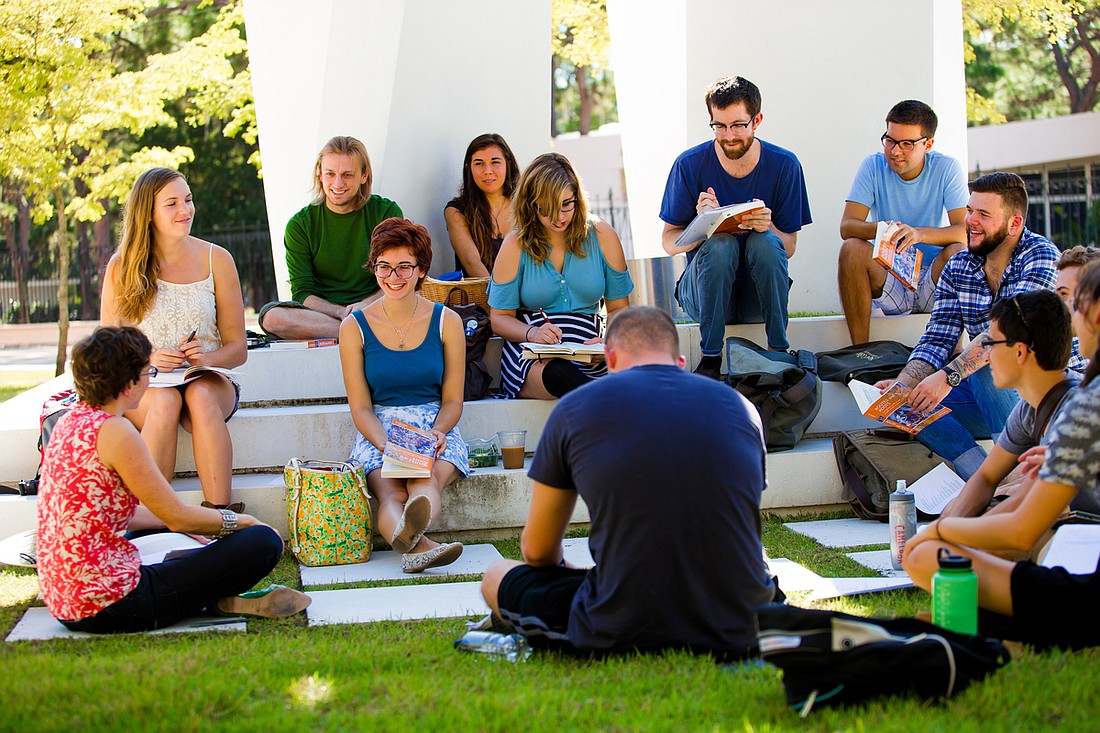- April 19, 2024
-
-
Loading

Loading

New College of Florida markets its intimate setting — fewer than 900 students — as an asset, but the school’s officials think bigger will be better.
This summer, with $5.4 million in state funding, the north Sarasota college will embark on the first phase of a growth plan. Between now and 2022, New College hopes to bring more than 300 additional students and 40 new professors to campus, changes designed to position New College among the country’s elite small liberal arts institutions, public or private.
The Board of Governors of the State University System unanimously approved the growth plan for New College in November 2016. In addition to the enrollment increase, the plan calls for an additional 360,000 square feet of buildings on the school’s 144-acre campus — or $45 million in new capital projects.
The changes may seem significant for such a small school, but New College President Donal O’Shea makes clear the plan is in service of a lofty goal: making the school truly elite.
“The colleges that we compete with, the ones at the very top — we’re very good, but we’re not there,” O’Shea said.
The state may have just approved the first phase of funding for a growth plan, but New College leaders have been pursuing a larger student body for more than a decade.
In one regard, the quest to boost enrollment is rooted in a very simple numbers game. Among the top 40 schools in U.S. News and World Report’s ranking of the top liberal arts colleges in the country, the standalone campus with the smallest enrollment is Haverford College at 1,233.
That’s not all New College officials used to decide to increase enrollment at the school, though. There’s a correlation between larger student bodies and higher performance statistics, such as graduation rate. That’s one of the metrics in which O’Shea wants New College to improve.
Right now, the school's four-year graduation rate is 57%. The average of the top 25 liberal arts colleges in the country is 85%. A larger enrollment, coupled with an increase in the faculty size, means a broader curriculum. That means the school is better able to offer classes students are interested in, O’Shea said.
“Without 120 or so faculty, you’re stretched a bit too thin to cover all the basic disciplines in the liberal arts,” O’Shea said.
But in the process of growing, will New College lose the character and quirks that define it as an institution? The school's leaders are striving to make sure that isn’t the case. The planned increase in the number of professors would maintain the student to faculty ratio at 10:1. And at 1,200 students, New College would still be on the small side of liberal arts colleges.
“From a student perspective, that won’t change at all — the feel of the place, or the fact that everyone knows and recognizes everyone else,” O’Shea said. “Most high schools are bigger than 1,200.”
Between more professors, more classrooms, a new 75,000-square-foot student center and other upgrades, the total cost of implementing the growth plan through 2020 is $71 million.
Even after a $5.4 million commitment this year, that’s a lot of money left to be allocated. Already, the state declined to fund a $4 million request for facilities planning this year. New College is at the whims of the state legislature when it comes to securing more money, but O’Shea remains confident that Florida’s government will continue investing in the school.
“The state is putting this in our base budget,” O’Shea said. “It’s supposed to be recurring.”
That’s not to say he’s not worrying about money. In particular, the possibility of a recession interfering with the growth plan is a real concern. But he thinks that if the state money comes through, New College will help facilitate the growth with private donations.
“At the moment, donors sense you’re patching holes rather than adding, in a way,” O’Shea said. “We think, if they get us to 1,200, we can then help ourselves on the private side.”
This summer, New College faculty is beginning to sort out the details of how the college will implement the growth plan — the school still has to decide what areas of emphasis the new professors will have, and how a larger student body will affect the curriculum offered.
For now, the school is united behind the idea that the growth will produce a stronger institution.
“Needless to say, all of us are cognizant of areas where this can go wrong,” O’Shea said. “I think everybody has really pulled together. We really want this to be transformative, not just a little bit of incremental growth here and there.”